The Role of Corrective Exercises in Sustaining Pain-Free Living
October 8, 2025
9 min

Understanding Corrective Exercises and Their Importance
Corrective exercises serve as a cornerstone in managing musculoskeletal pain, enhancing posture, and preventing injury. Focused on rectifying muscle imbalances and dysfunctional movement patterns, these exercises not only alleviate existing pain but also safeguard long-term physical health. This article explores how corrective exercises work, their diverse types, and their pivotal role in sustaining a pain-free lifestyle through evidence-backed strategies and practical applications.
The Crucial Role of Corrective Exercises in Pain Management and Injury Prevention
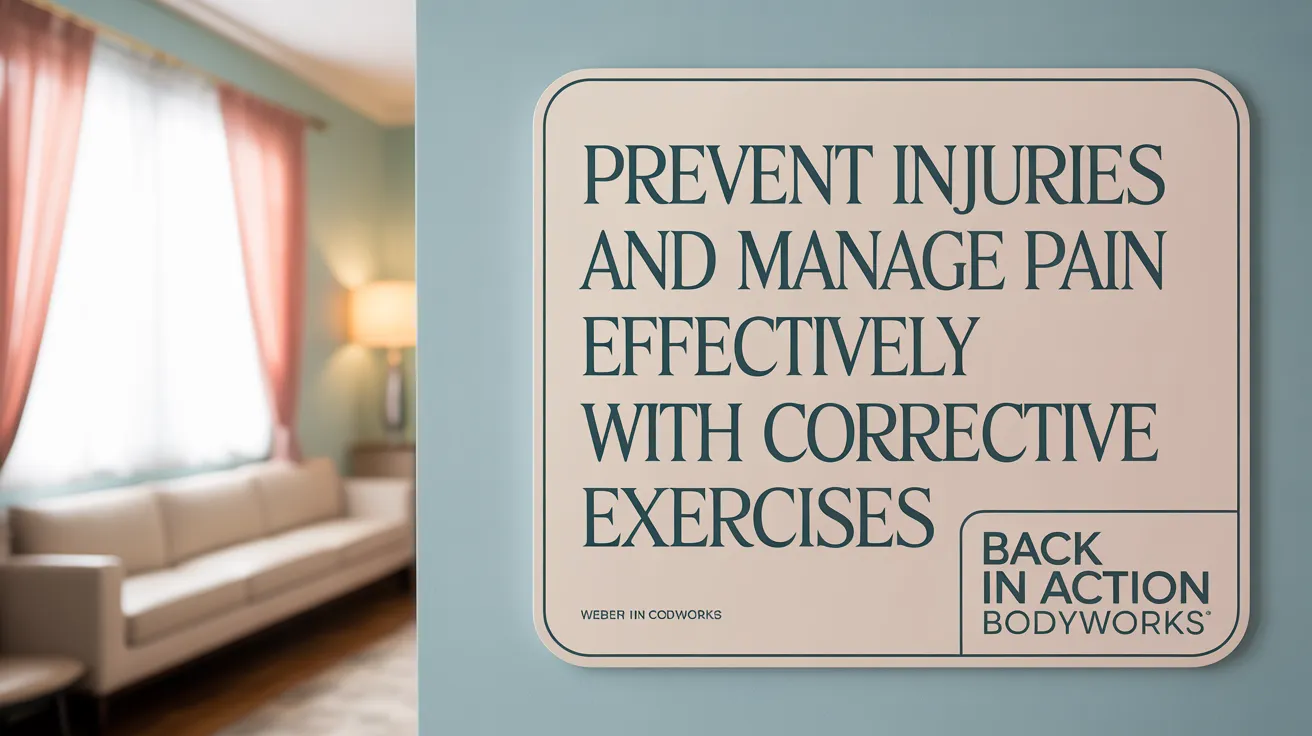
What is the role of corrective exercises in managing and preventing pain and injury?
Corrective exercises are fundamental in both alleviating existing musculoskeletal pain and preventing future injuries. They help address issues such as muscle imbalances, poor posture, and dysfunctional movement patterns that often underlie chronic pain conditions. These exercises include targeted strengthening, stretching, and stabilization routines, which are typically personalized following professional assessments.
By improving muscle balance and flexibility, corrective exercises reduce undue stress on joints and tissues. This, in turn, lessens pain and helps avoid injury recurrence. They support better posture and coordination—key factors in maintaining spinal health and overall mobility.
Incorporating corrective exercises into a wider health management plan enhances their effectiveness. When combined with manual therapies like chiropractic adjustments and soft tissue work, these routines can promote blood flow, cut down inflammation, and support tissue healing.
For best results, regular practice under professional supervision ensures exercises are performed safely and correctly. This not only maximizes pain relief but also builds resilience, enabling individuals to move confidently and sustain an active, injury-free lifestyle.
How Corrective Exercises Enhance Posture, Movement, and Overall Function

Corrective exercises are a fundamental approach to improving posture, movement, and overall physical function. They primarily aim to address muscle imbalances and faulty movement patterns that can lead to pain, stiffness, and reduced mobility. By targeting specific muscle groups, these exercises help correct poor postural habits such as slouching, forward head posture, or anterior pelvic tilt, reinstating proper alignment of the spine and joints.
One of the main benefits of corrective exercises is their ability to enhance flexibility and stability simultaneously. Stretching routines improve joint range of motion and decrease muscle tightness, while strengthening exercises build support around weak areas, particularly the muscles supporting the spine and pelvis. This dual focus helps prevent injury and relieves chronic discomfort.
In addition to supporting structural corrections, these exercises improve neuromuscular control, allowing for better coordination and body awareness. Movements like scapular retractions, core stabilization, and balance drills contribute to improved motor control, enabling smoother and more efficient functional movement.
Practicing corrective exercises consistently encourages long-term maintenance of body mechanics. They facilitate the development of healthier movement habits, reinforce proper posture throughout daily activities, and support ongoing muscular and joint health. As a result, individuals can enjoy reduced pain, increased mobility, and a higher quality of life. Incorporating these exercises into routine care or fitness programs helps in preventing future musculoskeletal issues and supports overall body function at every age.
Tailoring Corrective Exercises for Rehabilitation, Prevention, and Health Optimization

Corrective exercises serve a crucial role in multiple aspects of physical health, ranging from injury management to long-term wellness. In rehabilitation contexts, these exercises are tailored to restore proper movement patterns, support tissue healing, and balance muscle function after injury or surgery. For instance, targeted stretching and strengthening can correct muscle imbalances and improve joint stability, accelerating recovery and preventing future issues.
Beyond recovery, corrective exercises are highly effective in injury prevention. By employing functional movement screening (FMS™) and personalized correction programs, practitioners can identify movement dysfunctions that may predispose individuals to injury. Systematic correction strategies—such as neuromuscular control exercises, stability drills, and postural adjustments—help refine movement quality and bolster joint support. This proactive approach markedly reduces the risk of strains, sprains, and other musculoskeletal injuries, especially in athletes or active individuals.
In terms of overall health and performance enhancement, corrective exercises are designed to optimize posture, flexibility, and muscular balance. Regular practice improves body alignment and coordination, enabling better athletic performance and decreasing undue stress on muscles and joints during daily activities. These exercises often follow a structured progression—beginning with gentle mobility and stretching, advancing into strength and stability work, and culminating in functional movement re-education. This stepwise approach ensures sustained benefits and patient adherence.
Systematic integration of corrective exercises is essential for long-lasting improvements. Programs are personalized to address specific needs, with continuous assessments guiding adjustments. Whether for injury recovery, prevention, or health optimization, corrective exercises provide a foundation for maintaining optimal biomechanics, reducing injury recurrence, and supporting long-term physical resilience.
Understanding Types of Corrective Exercises and Their Specific Benefits
Corrective exercises are a diverse set of movements designed to address specific muscular imbalances, postural issues, and movement dysfunctions. They include several modalities, such as stretching exercises that improve flexibility and reduce muscle tension, strengthening routines that support muscles around the spine and joints, postural exercises aimed at correcting poor alignment, balance and stability drills that enhance coordination, mobility exercises that increase the range of motion, and functional movement activities that mimic everyday actions.
Each type offers unique benefits. For example, stretching helps maintain or improve flexibility, which is essential for pain-free movement and injury prevention. Strengthening exercises bolster support around the spine, decreasing the risk of misalignments and supporting an improved posture. Postural exercises target areas like the shoulders and neck, correcting distortions caused by prolonged sitting or muscular imbalances.
Incorporating balance and stability exercises enhances neuromuscular control, reducing fall risk and helping maintain proper movement patterns. Mobility drills break down stiffness in joints, promoting fluidity in motion, while functional movements retrain the body to perform daily tasks correctly. Together, these exercises improve overall body mechanics, support recovery, and reduce repetitive strain.
When combined with chiropractic care, corrective exercises can significantly enhance treatment outcomes, often increasing the efficacy of adjustments by 25-45%. Personalized exercise programs, created following thorough assessments, target individual needs for maximum benefit. Regular practice of these tailored routines not only accelerates healing but also fosters long-term health, injury prevention, and better functional performance, making them an invaluable part of holistic musculoskeletal health management.
Incorporating Corrective Exercises into Daily Wellness and Fitness Routines

Regular inclusion of corrective exercises in daily wellness and fitness routines plays a vital role in optimizing physical health. These exercises target muscle imbalances, improve posture, and enhance overall movement quality, making every movement more efficient and reducing injury risks.
One fundamental reason to include corrective exercises is their ability to activate muscles properly before engaging in strenuous workouts. Proper muscle activation, especially of stabilizers and supportive muscles, prepares the body for movement, increasing exercise safety and effectiveness. Activities like core stabilization, stretching tight areas, and activating underused muscles help set a solid foundation for more demanding exercises.
Supporting recovery and injury prevention is another crucial benefit. Corrective exercises work by restoring proper alignment, strengthening weak areas, and increasing joint stability. For example, strengthening the muscles supporting the spine can relieve chronic back pain and reduce the chances of future strain. Consistent practice helps maintain optimal biomechanics, which is especially important after treatments like chiropractic adjustments.
To ensure these exercises are effective, personalization is essential. Working with healthcare and fitness professionals allows tailored programs that address individual needs, weaknesses, and movement patterns. This customization increases adherence and ensures exercises target the root causes of dysfunction.
Strategies to promote exercise adherence include integrating corrective routines into daily schedules, using reminders, and making exercises accessible at home or in the gym. Utilizing technology, such as instructional videos or apps, can also improve motivation and understanding.
In summary, incorporating corrective exercises into your regular fitness routine not only enhances performance and supports recovery but also helps maintain long-term health by promoting balanced, pain-free movement. A holistic approach combining proper guidance, personalization, and consistency can maximize benefits and support overall wellness.
Corrective Exercises as a Foundation in Chiropractic Care and Physical Therapy
Corrective exercises serve as a fundamental component in both chiropractic care and corrective exercises and physical therapy, playing a crucial role in alleviating chronic pain with exercises and restoring proper body function. These targeted movements are designed to address muscle imbalances, improve posture through improving posture techniques, and optimize biomechanics, which are often underlying causes of chronic musculoskeletal pain.
In clinical settings, corrective exercises are tailored after comprehensive chiropractor assessment. They include stretching exercises for tight muscles, strengthening exercises for weak ones, and enhancing joint mobility and stability. This personalized approach ensures that each individual works on their specific deficiencies, such as weak core muscles or tight hip flexors, that contribute to discomfort and dysfunction.
Supporting manual therapies like spinal adjustments or soft tissue mobilizations, corrective exercises help reinforce the benefits of these treatments through manual therapy and exercises. They promote muscle coordination, improve movement patterns, and encourage body realignment, which can enhance the effects of manual interventions. Regular practice of these exercises fosters muscle memory, stabilizes joints with stability exercises, and prevents the recurrence of misalignments and pain.
Moreover, consistent engagement in corrective exercises accelerates recovery from injuries by restoring balance and function, reducing the likelihood of future problems. They are an integral part of a holistic pain management plan aimed at not only relieving existing pain but also maintaining musculoskeletal health over the long term. Early implementation and ongoing adherence are essential to maximize benefits, ultimately supporting a pain-free, functional body.
The Scientific and Clinical Evidence Supporting Corrective Exercises in Pain Relief

Numerous scientific studies, including randomized controlled trials and level 1b evidence, confirm that corrective exercises are effective in improving musculoskeletal function, posture, and movement patterns. These exercises support muscle strength, neuromuscular control, and proper alignment, particularly in treating conditions such as forward head posture, upper crossed syndrome, and dynamic knee valgus.
Research shows that targeted stretching, muscle activation, and functional movement training contribute to pain reduction and correction of postural and movement impairments. When exercises address both proximal and distal segments, patients often experience greater improvements, including enhanced mobility and decreased injury risk.
Studies further indicate that comprehensive feedback-guided programs outperform isolated muscle strengthening routines. These programs, integrating assessments and personalized adjustments, lead to more sustainable outcomes.
Overall, clinical evidence strongly supports integrating corrective exercises into rehabilitation and injury prevention strategies. They not only help alleviate pain but also optimize overall musculoskeletal health, making them a fundamental component of effective treatment approaches.
| Evidence Type | Main Findings | Additional Details |
|---|---|---|
| Randomized Controlled Trials | Confirm improvements in posture, muscle balance, mobility | Effect sizes often exceed minimal clinically important difference (MCID) |
| Level 1b Evidence | Show benefits in neuromuscular control and injury risk | Often involve targeted interventions for specific postural issues |
| Clinical Studies | Demonstrate reduced pain and injury recurrence | Highlight the importance of feedback and individualized plans |
These findings illustrate that corrective exercises, when properly prescribed and executed, provide a scientifically validated approach to managing and preventing musculoskeletal pain and dysfunction.
Sustaining a Pain-Free Life with Corrective Exercises
Corrective exercises not only address immediate pain and injury concerns but also lay the foundation for long-term musculoskeletal health and functional movement. By targeting muscle imbalances, improving posture, and enhancing neuromuscular control, these exercises empower individuals to maintain mobility, reduce pain recurrence, and enhance quality of life. Scientific evidence supports their role in rehabilitation, injury prevention, and wellness optimization. When personalized and integrated within holistic treatment plans, corrective exercises become indispensable tools for sustaining a pain-free lifestyle. Embracing consistent practice with professional guidance ensures safety, efficacy, and the lasting benefits essential to living well and pain-free.
Recent articles

Simple Lifestyle Adjustments to Maintain a Healthy Spine

Personalized Nutritional Counseling for Improved Health Outcomes

Exploring Non-Surgical Treatments for Spine-Related Conditions

An Introduction to Spinal Decompression for Sciatica Patients

Transformative Success Stories: Patient Experiences with Chiropractic Treatments

Why Chiropractic Care Is Essential for Back Pain Relief

Addressing Underlying Causes Versus Symptom Management in Pain Care

The Role of Nutrition in Enhancing Chiropractic Treatment Effectiveness

Sciatica Treatment Options: Is Spinal Decompression Right for You?

Lifestyle Tips to Maintain a Healthy Spine and Prevent Back Issues

The Synergy Between Physiotherapy and Chiropractic Treatments

What Happens During Your Initial Chiropractic Consultation

Effective Corrective Exercises for Sustainable Pain Management

Taking a Root Cause Approach to Chronic Pain Management

Holistic Pain Management Techniques Without Surgery

How Patient Success Stories Validate Chiropractic Care Benefits

Spinal Decompression: Innovative Treatment for Sciatic Nerve Pain

Spinal Decompression Therapy: A Non-Invasive Approach to Sciatica Relief

Exploring Holistic Approaches Beyond Surgery for Pain Relief

Practical Lifestyle Advice to Support a Healthy Spine Every Day

Corrective Exercise Routines Designed for Long-Term Pain Prevention

Real Patient Stories: Overcoming Chronic Pain with Chiropractic Care

Lifestyle Changes That Promote a Healthy Spine and Prevent Injury

How Addressing the Root Cause of Pain Leads to Lasting Relief

Non-Surgical Holistic Therapies to Manage Chronic Pain Effectively

Nutritional Counseling's Impact on Physical Health and Healing

Benefits of Regular Chiropractic Care for a Stronger Back

Your First Chiropractic Visit: What to Expect and How to Prepare

Patient Experiences: How Chiropractic Care Transformed Their Lives

Exploring Holistic, Non-Surgical Options for Pain Management

Combining Physiotherapy with Chiropractic Treatments for Enhanced Recovery

Holistic Treatments That Offer Alternatives to Surgery for Pain Relief

Corrective Exercise Strategies for Long-Term Spine Health

How Physiotherapy Complements Chiropractic Adjustments for Better Outcomes

First-Time Chiropractic Visitors: What You Should Know

Understanding the Importance of Treating Pain at Its Source

Adopting Lifestyle Changes to Support Your Spine's Wellness

Utilizing Physiotherapy to Enhance Chiropractic Treatment Outcomes

The Key Advantages of Chiropractic Care for Back Pain Sufferers

Why Focusing on Root Causes Improves Pain Treatment Success

Corrective Exercises That Promote Lasting Pain Relief and Mobility

Sciatica Relief Through Targeted Spinal Decompression Techniques

Preparing for Your First Chiropractic Appointment with Confidence

Healthy Lifestyle Habits for Maintaining Spinal Alignment

Success Stories Highlighting Chiropractic's Role in Pain Recovery

Top Benefits of Chiropractic Care for Chronic Back Pain

Nutrition Tips to Boost Your Overall Wellness and Recovery

How Chiropractic Care Alleviates Back Pain Naturally

How Nutritional Counseling Supports Overall Wellness and Spine Health

Step-by-Step Guide to Your First Visit with a Chiropractor

Using Nutrition to Support Chiropractic and Overall Wellness

Integrating Physiotherapy in Your Chiropractic Healing Journey

How Physiotherapy Complements Chiropractic Adjustments for Faster Healing

Lifestyle Tips for Maintaining a Healthy Spine and Preventing Back Pain

Heartwarming Patient Testimonials Highlighting Chiropractic Success

How Proper Nutrition Supports Chiropractic and Physiotherapy Treatments

Combining Physiotherapy and Chiropractic Treatments for Optimal Recovery

Why Chiropractic Treatments Are Effective for Managing Back Pain

Choosing a Chiropractor: Tips for Finding a Trusted Provider

Integrating Physiotherapy and Chiropractic: Benefits and What to Expect

How Tailored Corrective Exercises Can Aid in Pain Management

Chiropractic Care: A Proven Solution for Alleviating Back Pain

What to Expect at Your First Chiropractic Visit: A Comprehensive Guide

The Importance of Root Cause Analysis in Effective Pain Management

The Role of Corrective Exercises in Sustaining Pain-Free Living

Combining Chiropractic and Physiotherapy for Comprehensive Pain Relief

How Addressing Underlying Causes Improves Pain Treatment Effectiveness

Maintaining Spinal Health Through Lifestyle Changes and Preventive Care

Understanding the Benefits of Chiropractic Adjustments for Back Pain Sufferers

Spinal Decompression Therapy: A New Hope for Sciatica Relief

Lifestyle Recommendations to Support a Healthy Spine and Reduce Pain
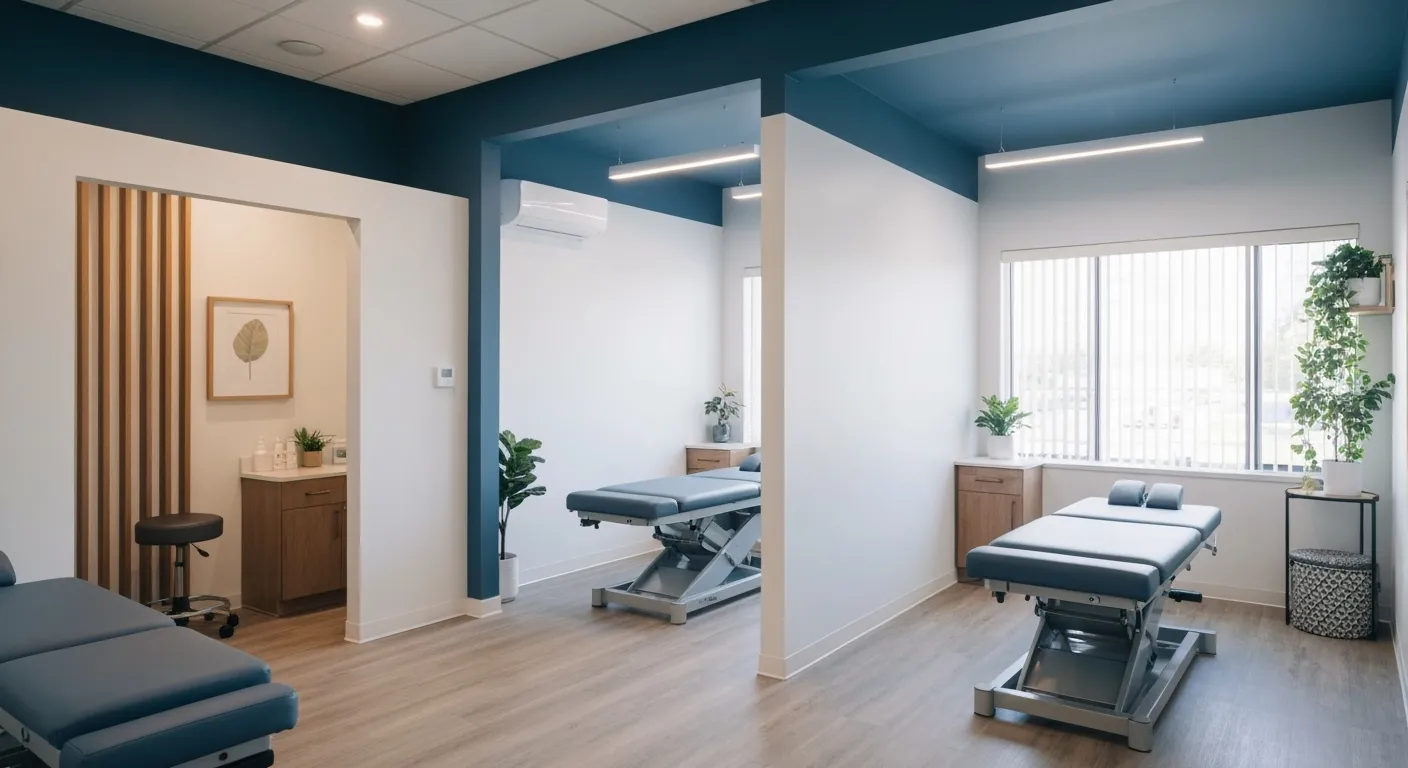
Choosing the Right Chiropractor: Key Factors to Consider Before Your First Appointment

Non-Invasive Treatment Alternatives: A Holistic Approach to Pain Relief

Corrective Exercises to Support Long-Term Relief from Chronic Pain

Exploring Non-Surgical Approaches to Spine Health and Wellness

Tips for Daily Habits That Keep Your Spine Strong

Success Stories: How Chiropractic Treatments Changed Lives

Why Focusing on the Root Cause of Pain Leads to Better Outcomes

Nutritional Counseling and Its Impact on Overall Wellness and Recovery

Patient Testimonials That Showcase the Power of Chiropractic Care

Preparing for Your First Chiropractic Appointment: What You Need to Know
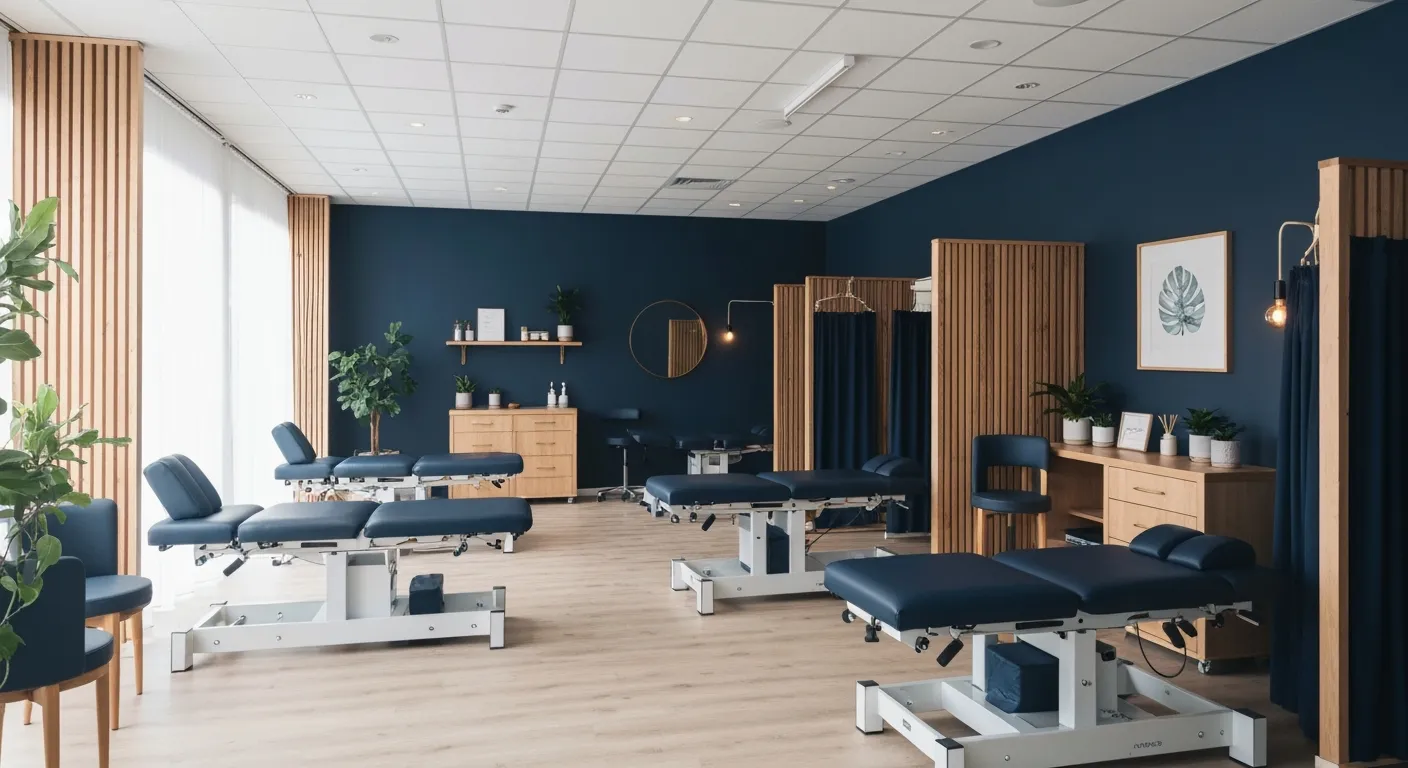
Holistic Treatment Options: Beyond Surgery for Pain Relief
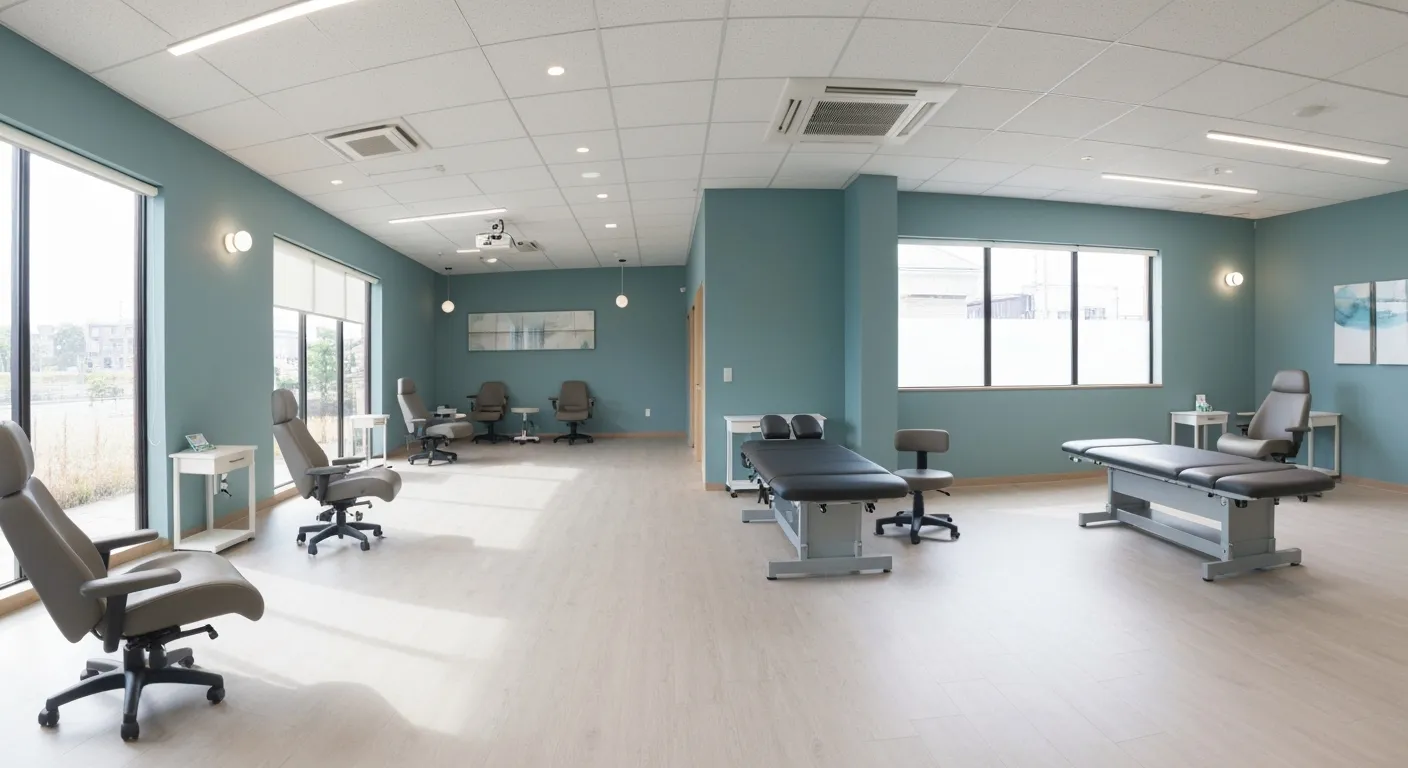
Holistic Pain Relief Methods That Avoid Surgery

Nutritional Strategies for Supporting Spine Health and Recovery

First Chiropractic Visit: What Happens and How to Prepare

Chiropractic Patient Success Stories: Inspiring Journeys to Wellness
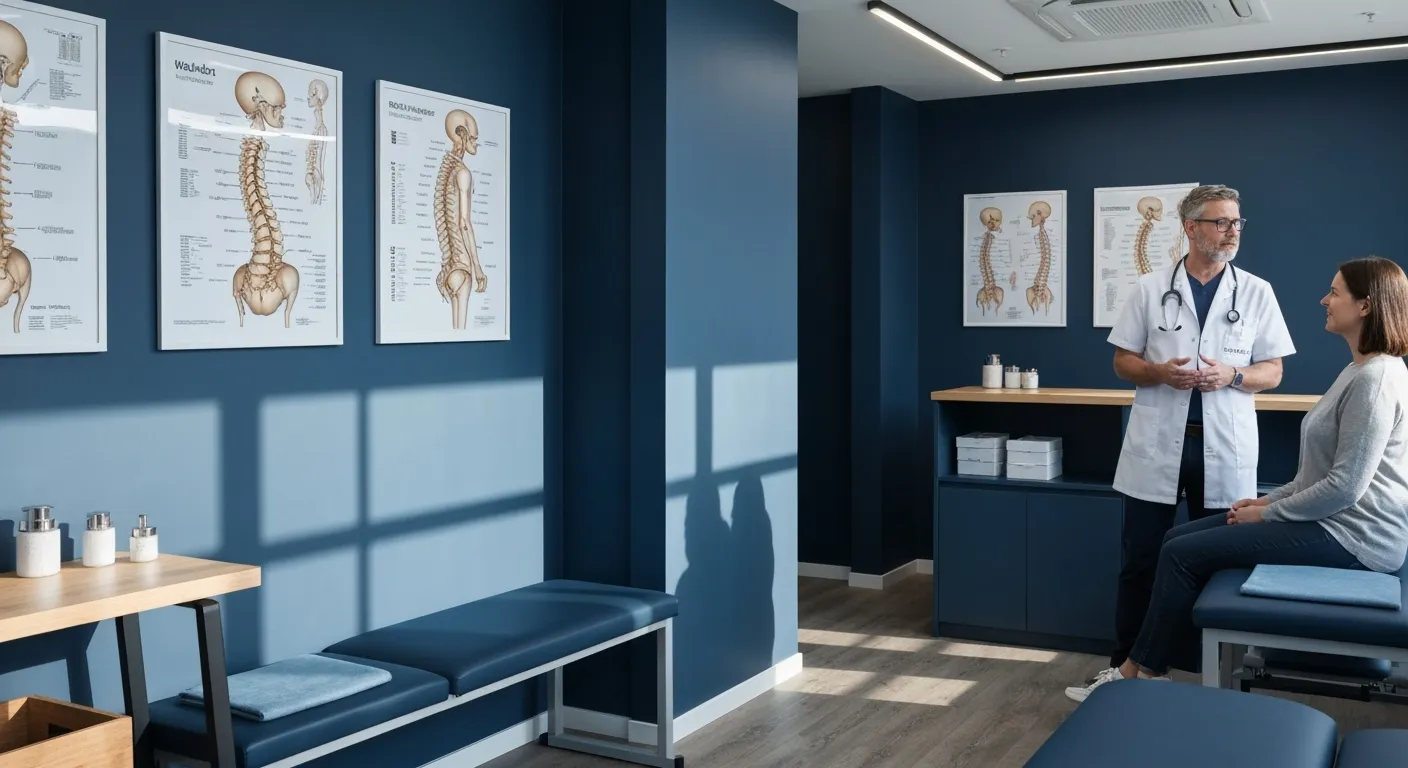
Effectiveness of Spinal Decompression Therapy in Managing Sciatic Nerve Pain

Addressing Pain at Its Source: Why Treating the Root Cause Matters

Corrective Exercise Programs Designed for Long-Term Pain Prevention

Healthy Lifestyle Advice for Maintaining Spinal Alignment
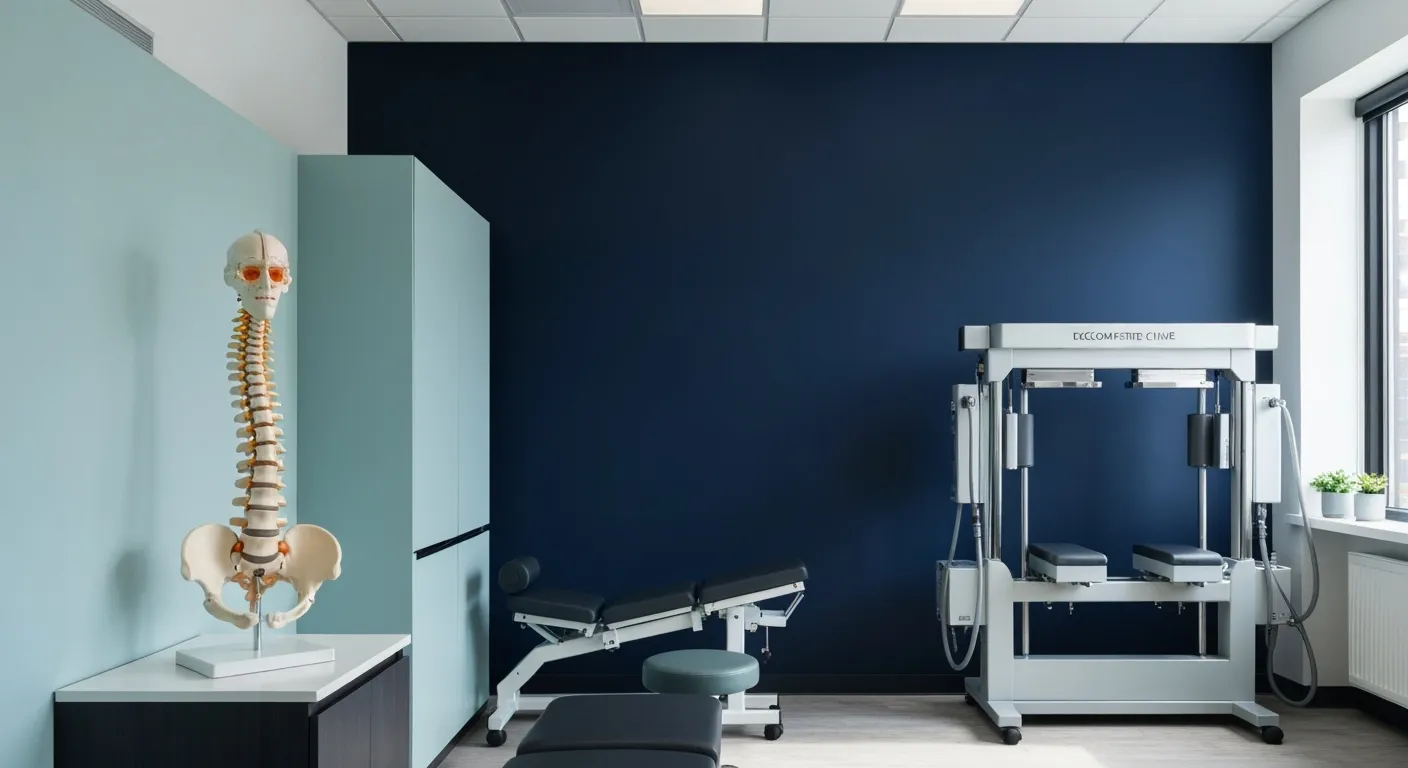
Understanding Spinal Decompression as a Treatment for Sciatica Pain
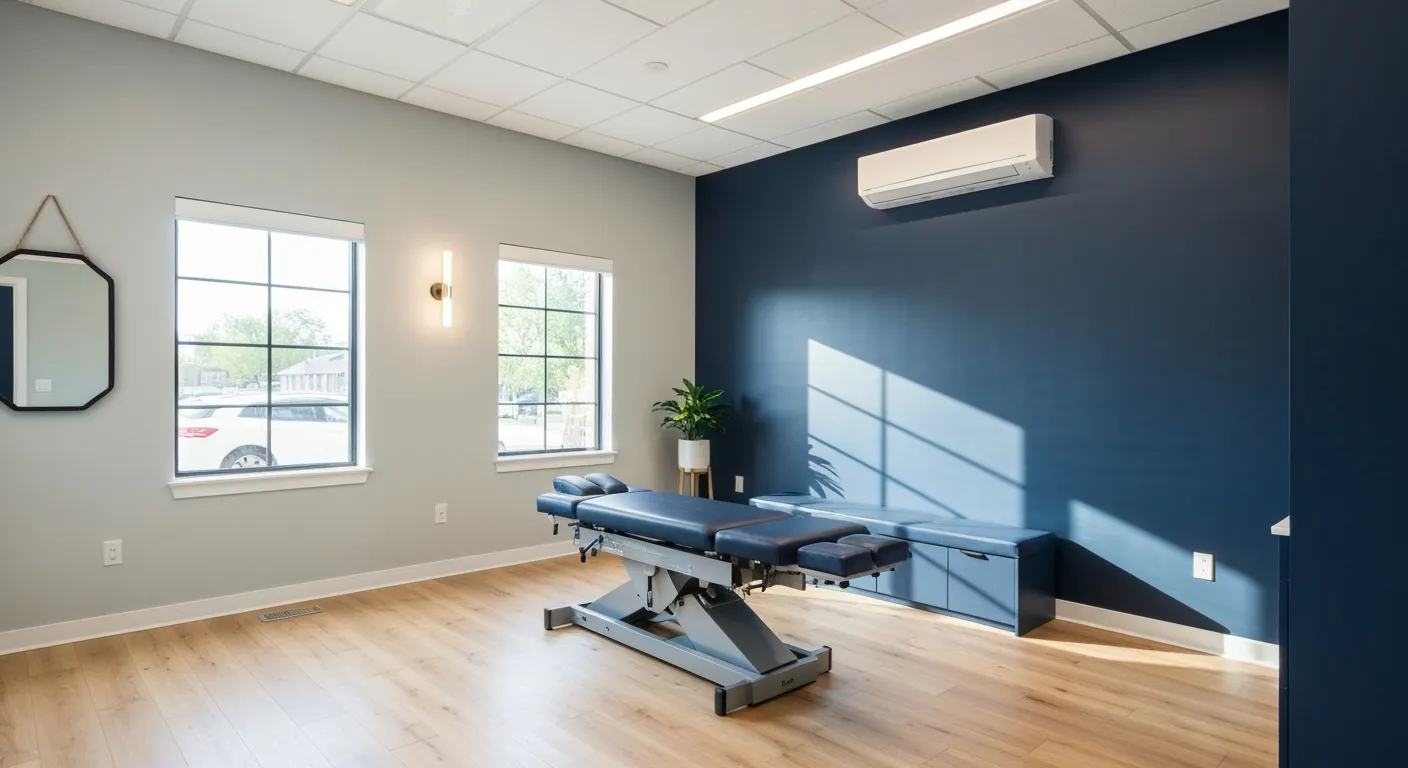
Benefits of Chiropractic Care Specifically for Back Pain Relief

Understanding Gait Analysis in Physiotherapy
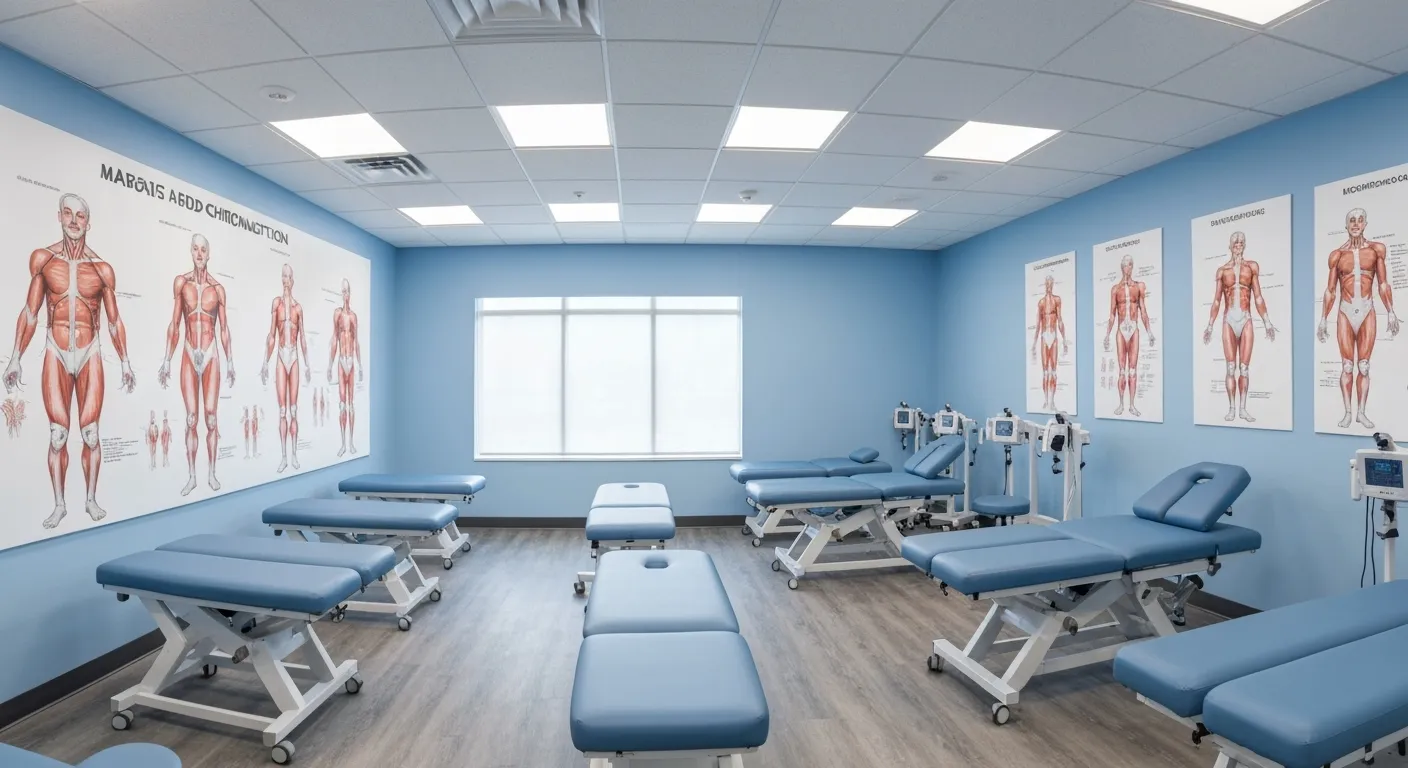
The Difference Between Muscle Soreness and Dysfunction

Workplace Stress Statistics: How Muscle Tension Impacts Productivity
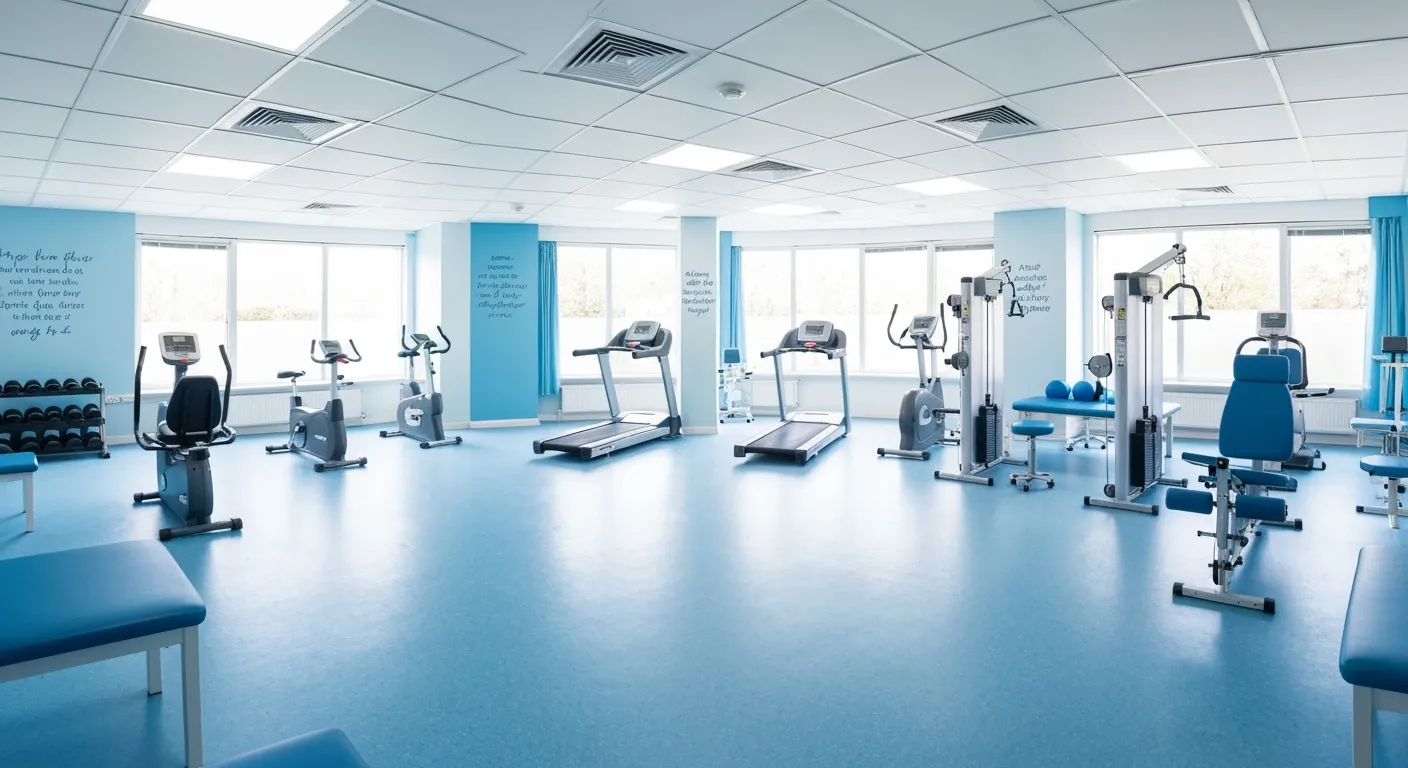
How Physiotherapy Improves Mobility for Seniors

How to Communicate Pain Levels to Your Therapist Effectively
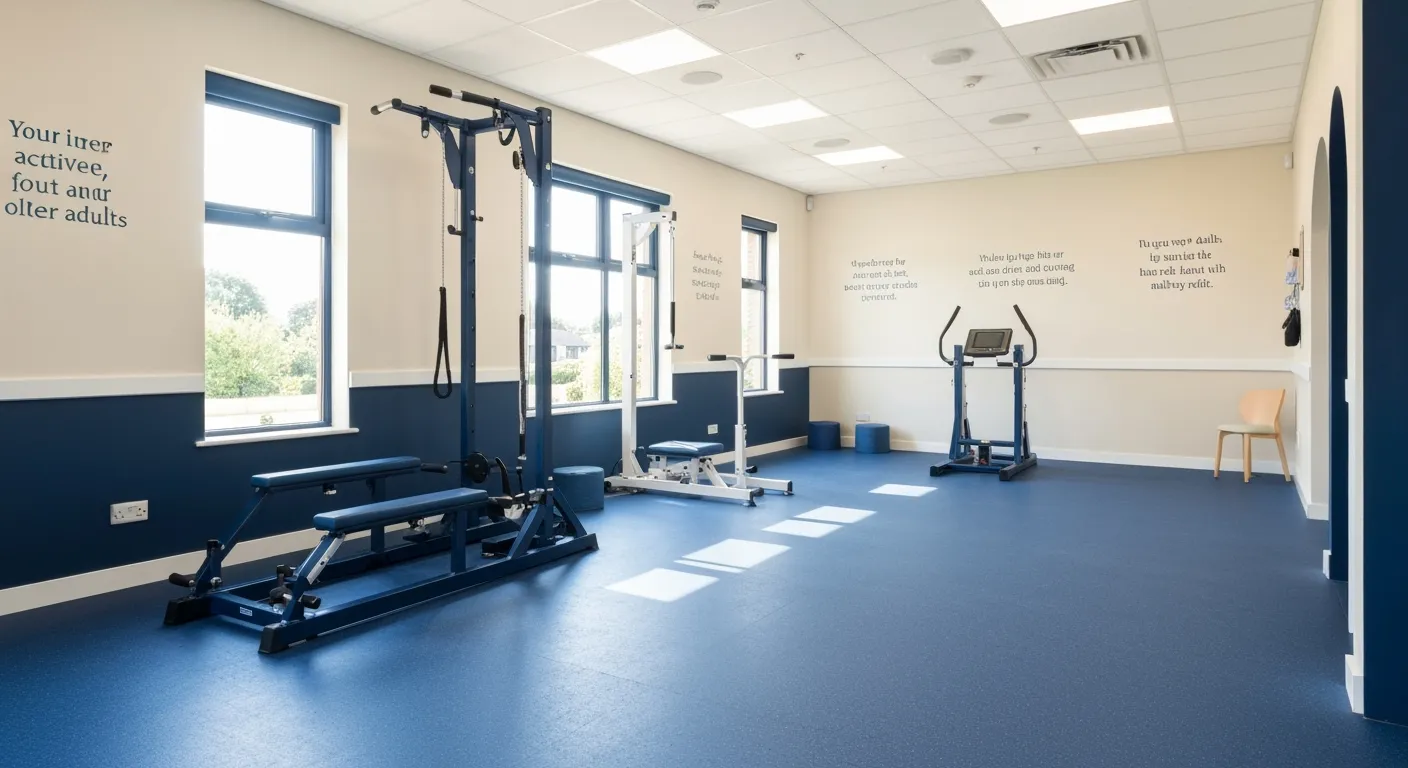
Physiotherapy Interventions for Balance and Fall Prevention

How Physiotherapy Helps Post-Surgical Recovery

